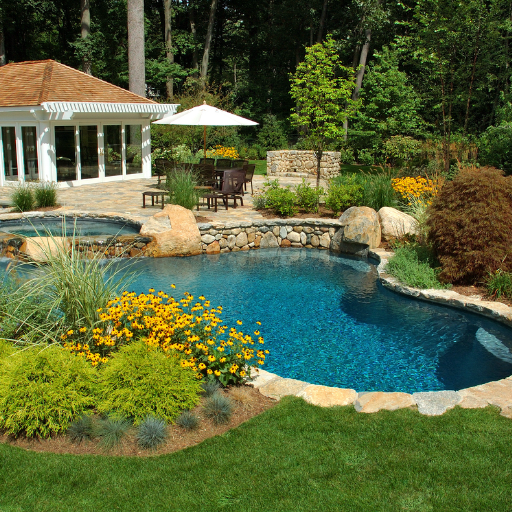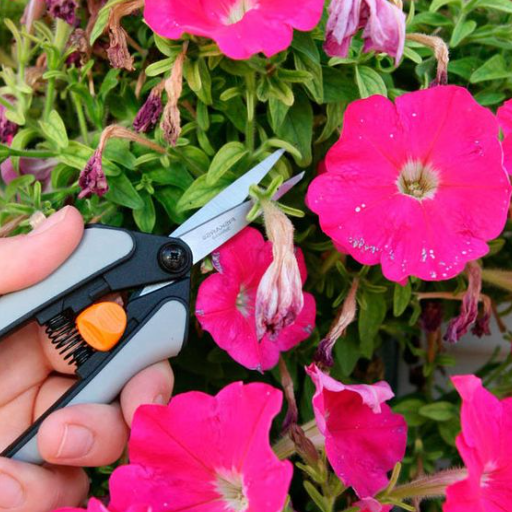The Hibiscus plants are known for gorgeous, large flowers and a characteristic tropical aura they impart to any garden or indoor-space setup. Hibiscus planting is quite fun, and if you know a little about how to grow and maintain them, you will ensure that they remain healthy and beautiful. This guide will cover all the basics of hibiscus care, such as choosing the appropriate types of hibiscus for your space, ideal sunlight conditions, watering, and feeding. Moreover, we will discuss common pruning methods, pest control tips, and how to overwinter hibiscus in cold zones. By the time you finish reading this article, you should know how to care for and nurture the hibiscus so that the plants grow well along with the magnificent blossoms through each season.
Introduction to Hibiscus
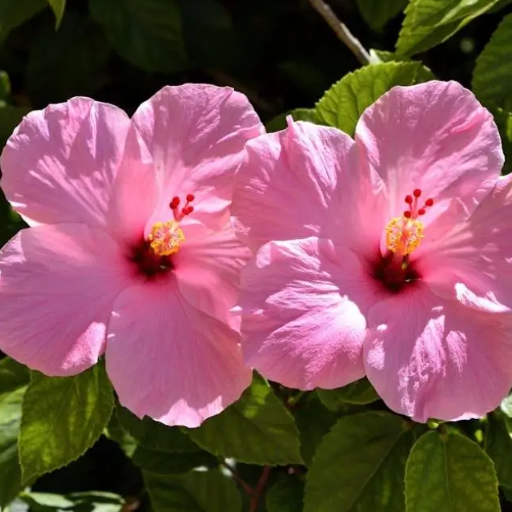
Hibiscus plants have colorful, tropical flowers and can grow in many conditions. The hibiscus should be chosen according to the climate and space because the tropical hibiscus prefers warmer environments, while the hardy ones can tolerate colder regions. Ensure increased sunlight to your hibiscus, allowing about six to eight hours of sunlight, and water it regularly, maintaining a moist soil condition without waterlogging. Applying a balanced fertilizer will enhance vegetative growth and promote flowering. Prune to keep the shape and develop new blooms, while pest control will keep the plant healthy. For overwintering in cold regions, bring tropical hibiscus inside or appropriately insulate the hardy types. Taking care of these factors will keep your hibiscus alive and growing vividly the entire year.
What is Hibiscus?
Literally meaning “mallow,” Hibiscus is a genus of flowering plants with large blossoms that bring a tropical flair to a garden. They belong to the Malvaceae family, and exist in several varieties all over the world from tropical to temperate zones. Apart from the common beauty as their attribute, these plants are highly versatile, being utilized in garden settings, landscaping, and even herbal teas. The flower color possibilities of Hibiscus range from red to pink, yellow to white, painting any concrete or glass environment with a stern visual appeal.
Types of Hibiscus Plants
Hibiscus plants are an incredibly diverse genus, with two existences: hardy hibiscus and tropical hibiscus. Hardy hibiscus, such as Hibiscus moscheutos, has larger flowers that thrive in cold climates and can finish blooming flowers up to 12 inches in diameter. These sorts of perennials die down in the winter months and regrow back with the onset of the spring, so they pose as an amazing plant option for temperate gardens. Tropical hibiscus such as Hibiscus rosa-sinensis on the other hand, develop well in a warm environment free of frost; they present a parade of colorful, attractive flowers, which look great in pots or as hedges. Besides that, more modestly popular varieties like Hibiscus syriacus (Rose of Sharon) and Hibiscus sabdariffa (Roselle) speak volumes about the adaptability of the plant, where the former is a conventional shrub, while the latter goes into use for teas and culinary arts. Each type of hibiscus offers different advantages for particular climates and uses, so practically every gardener’s needs can be met through hibiscus.
Hibiscus Varieties for Your Garden
The first thing I would advise you to do when panting hibiscus varieties would be to assess your local climate and gardening goals. For a garish and tropical look, Hibiscus rosa-sinensis is suitable, thriving in warm and sunny surroundings and endowed with brightly colored flowers. If you want something tougher, go for Hibiscus syriacus that produces terrific flowers in low temperatures. For extra culinary or herbal delights, Hibiscus sabdariffa is a contender, with its tangy and flavorful calyx best suited for teas and cooking applications. The options are many. So, there truly is a hibiscus to suit your aesthetic tastes and pragmatic needs.
Growing Hibiscus
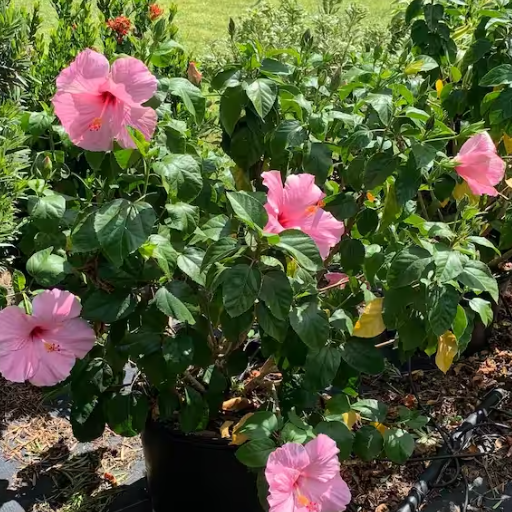
In the matter of growing hibiscus, you start by picking a well-drained site, sun-drenched as most varieties require about six hours of full sun. The soil should be fairly rich and maintained at slight acidity (pH 6.0-7.0). It may be maintain moist, but never soggy. They should be watered regularly once dry, but never over-watered to prevent root rot. Fertilizing every few weeks in the growing period with a balanced fertilizer will give the plants great blooms. Pruning aids in keeping the shape of plants along with promoting new growth, while pesticides will fend off pests such as aphids or spider mites that attack the plants. This way the hibiscus will bless you with gorgeous flowers and green leaves all along.
Ideal Climate for Hibiscus
Hibiscus plants thrive under warm, tropical climates, where temperatures usually remain between 60°F and 90°F. Abundant sunlight is necessary, with ideally, six to eight hours of direct sunlight each day, assuring sturdy growth and glowing blooms. While they can handle a good amount of shade, too much shade might result in fewer flowers. A humid atmosphere fits perfect for them as well, emulating their natural environment. If you happen to live in an area with a cooler climate, it might be good to grow hibiscus plants in pots so they can be brought indoors at the onset of cold months and casing from frost or temperature below 50°F.
How to Plant Hibiscus in Pots
A quick way of cultivating these tropical beauties is planting hibiscus in pots, which is so fitting for those living in a colder climate. Start by choosing a pot that has a minimum diameter of 12 inches with good drainage holes preventing waterlogging. Use a good quality well-draining potting mix enriched with organic materials. I prefer filling the pot about two-thirds full before placing the plant in it, ensuring that the base of the stem will sit level with the soil surface. Once in place, backfill the pot with soil and press gently to secure the plant. Water thoroughly, allowing for the settling of the soils.
Make sure your potted hibiscus will receive six to eight hours of sunlight each day. During the growing season, feed the plant on regular intervals with a balanced slow-release fertilizer to promote flowering. Do keep track of the moisture in the soil so water the plant whenever the upper inch feels dry; avoid allowing the pot to sit in water at all costs. If the climate goes cold, take the pot indoors and place it in a location with bright light till the temperatures rise up once more. When looked after well, the plants will flourish and shower you with the most brilliant display of exotic blooms.
Growing Hibiscus in Your Garden
For any attempt to grow hibiscus in the garden, I suggest that you choose a location with plenty of sunlight as the plants will thrive best under at least six to eight hours of direct light daily. Make sure the soil is well-draining with ample organic materials to support the growth. Water your hibiscus plants regularly in order to keep soil moderately moist, avoiding waterlogging. During the growing season, fertilize the plant, recommending a balanced, slow-release compound to promote abundant flowering. If you have cold winters in your area, try hardy varieties, or proceed with mulching to protect the root. With all the attention and care given, your garden hibiscus will respond beautifully with bursts of vibrant colors adorning the outdoors.
Hibiscus Care Basics
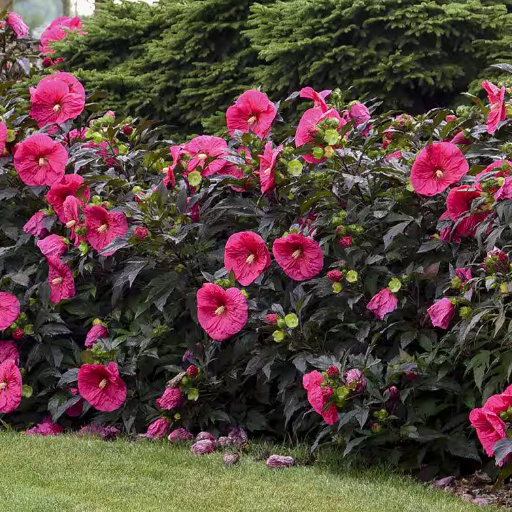
Supplying nutrient-rich, well-drained soil is the best thing that can be done when caring for hibiscus. Water the plant consistently to keep the soil moist but never soggy. Using a balanced slow-release fertilizer through the growing season will encourage lush flowering. Pruning late winter or early spring gets the plant shaped while cutting away any dead or weak growth. Where winter is severe, mulching around the base in order to provide insulation for the root system or growing hardy varieties that will better withstand a rough winter is advisable. And with these steps, the hibiscus will grow so well and beautiful.
Watering and Fertilizing Hibiscus
For my hibiscus to grow healthy, it must be watered well. I water them deeply but wait until one inch of the soil gets dry before rewatering, as it could lead to root rot due to overwatering. During such hot months, I may water daily, if needed. Less watering is needed during the cooler months. During fertilization, I apply a high potassium slow-release fertilizer every two weeks throughout the growing period. This encourages magnificent flowering and healthy growth. I never over-fertilize by following all the instructions on the package, which can harm the plant. This process sustains the health of my hibiscus and makes it blossom beautifully from season to season.
Pruning Hibiscus for Optimal Growth
Pruning of hibiscus is an important task I undertake so that the shrubs attain good growth and maintain the desired shape. I remove the dead and damaged or crossed branches to improve the airflow through the plant and to allow sunlight to reach every part of the plant. Usually, late winter or early spring is the time I perform the pruning just before the growing season starts, encouraging fresh and healthy growth. I always use sharp and clean tools for pruning and make cuts just above a node or bud to stimulate new growth. All this care in pruning keeps my hibiscus looking bright and well-maintained and encourages more profuse blooming during the growing season.
Common Problems with Hibiscus
According to my experience, there are just a handful of usual problems that hibiscus is subjected to, but with the correct treatment, they grow quite well. One frequent concern causes yellowing of leaves, likely caused by overwatering and inconsistent watering. I resolve this by making sure that the soil is well draining before choosing a consistent watering regime that maintains the soil moist but not soggy.
Another few common problems include pest infestation, mostly every aphid, spider mites, or whiteflies. For control, I regularly check the leaves and use soap-insecticides or neem oil when necessary. Proper pruning also reduces sites where pests hide.
Finally, poor blooming can sometimes occur due to lack of sunlight or too much high-nitrogen fertilizer. I ensure that the hibiscus receives 6-8 hours of sunshine every day, while a balanced fertilizer or one particularly formulated for blooming plants is used. Paying attention to these details will keep the hibiscus healthy and laden with gorgeous flowers.
Caring for Hibiscus Indoors
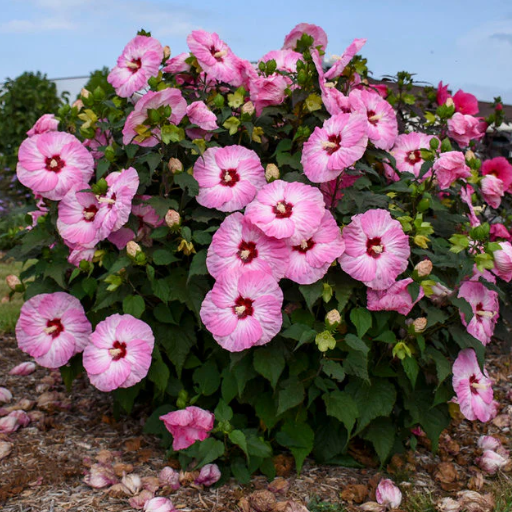
It is vital to bring the hibiscus indoors and replicate its natural as far as possible. The plant should be placed where filtered sunlight would reach it for at least 6-8 hours; a south-facing window is usually the best choice. Keep the temperature as steady as possible between 65-75°F, as hibiscus plants do not fancy sudden cold drafts. Water the plant whenever the top inch of soil feels dry and always make sure of good drainage to prevent root rot, with occasional misting or using a humidifier for moderate humidity. Feed the plant every 2-4 weeks with balanced fertilizers during the growing season to aid in healthy development and flowering; pruning promotes bushier growth and eliminates dead or weak branches. By adhering to these rules, iced hibiscus plants will grow bright with foliage and colorful blooms.
Tips for Growing Tropical Hibiscus Indoors
I always ensure it will get a bright spot with abundant indirect sunlight so that tropical hibiscus will thrive under light-rich conditions indoors. Water the plant when the top inch of soil feels dry to prevent overwatering. Properly drain the pot to avoid water lurking at the bottom, causing root rot. Moderate humidity is another important factor; occasionally mist the plant with a spray bottle or keep running a humidifier nearby. Feeding is necessary during the active growth stages, every two to four weeks, with a balanced fertilizer. This promotes nourishing growth. Regular pruning to thin the plant also stimulates bushy growth, and every removal should be of the weak or dead branches. With these practices carried out continuously, my hibiscus remains healthy and vibrant throughout the year.
Hibiscus in Pots: Care and Maintenance
Hibiscus goes wonderfully in pots if several essential care practices are followed. One of them is placing the hibiscus in a pot that drains well and has good soil quality, enriched with nutrients. I find it best to use a soil mixture for tropical plants to enable robust root formation. Hibiscus needs direct sunlight with brightness, and hence, placing the pot near a sunny window in winter and outside on the sun during summer is perfect. Keep the soil moist at all times but never soggy; I usually stick to watering my plants when the soil feels dry at the top 1 inch.
The temperature and humidity are critical for potted hibiscus, so keep them ideally ranging from 60°F to 85°F. During the cold months, bring the pot indoors so the plant stays away from frost. Fertilize Go on and fertilize regularly about every 2-4 weeks during the growing season with a balanced water-soluble fertilizer. Pruning is also crucial as it helps maintain plant shape and stimulates more flowers-ie usually prune mine just before new growth begins in spring. Repot every 1-2 years to prevent the plant from becoming pot-bound and give the roots fresh soil to stay alive. Doing so will allow your hibiscus to prosper with blossoming hugely every year!
Managing Pests on Indoor Hibiscus
While managing pests on indoor hibiscus, attention is given to early detection and maintaining a healthy plant environment. Regular inspection of the leaves, stems, and soil enables me to catch common pests such as spider mites, aphids, and whiteflies before they become a real problem. When pests are first found, I will apply neem oil or insecticidal soap to the problem areas, being careful not to overdo it. I will continue to keep the plant clean by wiping the leaves with a damp cloth and clearing away fallen debris from the pot. Ensuring the hibiscus is well watered, fertilized, and sufficiently lit will support resilience against possible pest infestations.
Seasonal Hibiscus Care
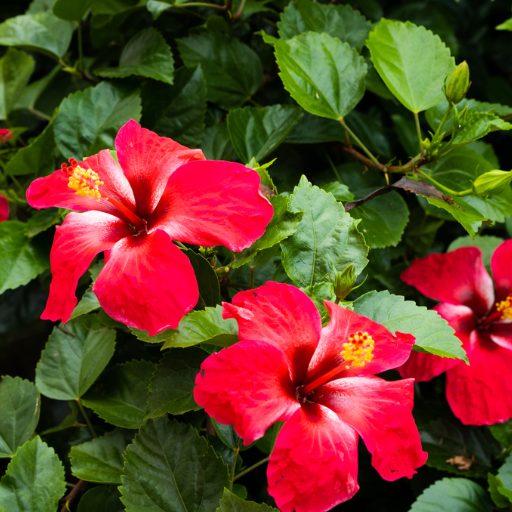
Hibiscus care must be planned carefully for every season to ensure that the plant is kept alive and flowers beautifully. During the warmer months of spring and summer, keep in mind that the hibiscus needs a lot of watering and fertilization, as it is in full growth during this period. Feed with a balanced water-soluble fertilizer every two weeks while ensuring that the soil stays moist at all times but not soggy. When the plants are entering the dormancy phase during fall, gradually taper off the feed and water, especially if you live in a colder climate. Give the plant a light pruning to keep its shape and rid it of dead growth. For winter care of tropical hibiscus, if there is any chance of frost, bring the plant indoors and place it near a bright window to allow adequate light. Watering should be further reduced during this time, such that the topmost inch of soil is allowed to dry between waterings to avoid obstruction from excess moisture. A seasonal change in the care approach will allow the hibiscus to flourish throughout the year.
Caring for Hibiscus in Colder Climates
In the colder climates, early preparation for the changing season is what I have determined important for hibiscus care. Prior to the first frost, by all means, I guarantee bringing the tropical hibiscus plants indoors from the freezing temperatures. Placement nearby a south-facing window or some other bright spot should guarantee their getting enough light because they do poorly in low light.
A shock to the plants could be avoided if I start by putting them in a sheltered spot for a few days before bringing them fully indoors. I might also want to reduce the watering at this time and allow the soil to dry in the top one inch between waterings, as the plants require less moisture in the cooler months. I don’t fertilize the plants during this stage of their dormancy to keep from causing them any unnecessary stress. Any hardy hibiscus I put mulch around at the base, this helps to insulate the roots. These are little things that make a big difference between a happy hibiscus and one that suffers during the colder times.
Preparing Hibiscus for Winter
Preparation for winter was focused mainly on preventing cold injury. Tropical hibiscus is a good candidate for bringing indoors in a bright area where they still manage to get their indirect sunlight. Watering is cut down when they get inside, making sure the soil remains dry for just a little while between waterings; overwatering is now really bad for the roots by that time. No fertilizing until spring either, to avoid stimulating unnecessary growth. On the other hand, the hardy ones stay outdoors with a thick layer of mulch insulating their roots, keeping the warmth in. That’s how I keep my hibiscus healthy and beautiful, awaiting when they can go into high gear with the bright days.
Spring Care for Hibiscus Plants
In the springtime, I gently expose my hibiscus to more sunlight and heat so that it will not undergo any shock. I trim back any unhealthy and weak stems to promote healthy new growth and shape the plant for a fuller appearance. Good fresh soil should be ensured; if need be, I repot the plant with a well-drained pot. I keep on watering it so the soil stays moist, not soggy, and go with the fertilize with a balanced slow-release fertilizer to encourage blooming. These processes will see that the hibiscus smoothly passes into its active growth phase with great vigor and an abundance of flowering.
References
-
Martha Stewart: A detailed guide on hibiscus tree care, emphasizing the importance of full sun exposure for optimal growth. Read more here.
-
Unsophisticook: Offers practical tips for hibiscus care, including sunlight requirements and plant rotation for even light distribution. Explore the guide here.
-
Smithsonian Gardens: Focuses on the care of Hibiscus rosa-sinensis, discussing sunlight preferences and the impact of shade on flowering. Learn more here.
Frequently Asked Questions (FAQ)
How to care for hibiscus plants indoors?
Caring for hibiscus indoors requires specific attention to their light and water needs. These tropical hibiscus prefer bright, indirect sunlight, so placing them near a window is ideal. Ensure that you water them when the top inch of soil feels dry, but avoid overwatering as it can lead to root rot. During the winter, it’s important to keep your hibiscus indoors to protect them from frost. Fertilizing every few weeks with a balanced fertilizer can also encourage blooming. Monitor for pests, as indoor plants can still attract them, and use horticultural oil if necessary.
What are the common problems with hibiscus?
Common problems with hibiscus include issues like wilting leaves, yellowing foliage, and pest infestations. These symptoms could indicate that your hibiscus is either overwatered or underwatered, so adjusting your watering schedule may help. Pests such as aphids and spider mites are also common, and treating your hibiscus with horticultural oil can effectively manage these pests. Another issue is poor blooming, which can often be rectified with proper fertilization and ensuring your plant gets enough sunlight. If your hibiscus is not thriving, check the environment for your hibiscus and make adjustments accordingly.
What type of hibiscus is best for pots?
When considering which type of hibiscus to plant in pots, both tropical and hardy hibiscus varieties can thrive in containers. Tropical hibiscus species are particularly known for their vibrant blooms and can be grown indoors during the winter months. Additionally, perennial hibiscus is also an excellent choice for container gardening as they can return each year. Ensure to use a pot with drainage holes and a well-draining potting mix. Regularly check your hibiscus in a container for moisture levels, as pots tend to dry out faster than garden soil. Feeding your hibiscus with a balanced fertilizer will also promote healthy growth.
How do you prune a hibiscus tree?
Pruning hibiscus trees is essential for maintaining their shape and promoting new growth. Use sharp pruning shears to remove dead or damaged branches, as well as any growth that appears to be weak or crowded. The best time to prune is in late winter or early spring before the growth season begins. This can encourage better blooming throughout the growing season. Be careful not to cut too much, as hibiscus plants flower on new growth. Regular pruning also helps keep your hibiscus healthy and can improve air circulation within the plant.
What do hibiscus plants need to thrive?
Hibiscus plants need a combination of sunlight, water, and proper soil to thrive. They generally prefer full sun exposure, which aids in their blooming process. It’s crucial to water them regularly, allowing the soil to dry slightly between waterings. Additionally, using a well-draining potting mix can help prevent waterlogged roots. Fertilizing throughout the growing season will provide the nutrients necessary for healthy growth and vibrant flowers. Lastly, monitoring for pests and diseases will help maintain your hibiscus plant’s health and vigor.





